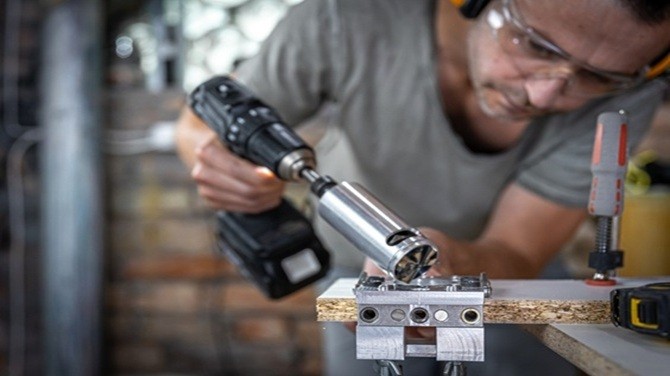Have you ever watched a mechanic change a tyre in seconds or a carpenter fire nails effortlessly into timber? Their secret is pneumatic tools – air-powered devices that deliver unmatched speed, precision, and durability.
Whether you’re a professional tradie in timber frame construction or a DIYer tackling weekend projects, mastering pneumatic tools can save you time, money, and energy. This guide breaks down the basics, types, benefits, costs, and best practices to help you choose and maintain the right tools for your needs.
Understanding Pneumatic Tools
Pneumatic tools are powered by compressed air rather than electricity or batteries. An air compressor generates pressure that flows through hoses, driving pistons or rotors inside the tool.
Key advantages:
- Lightweight – no heavy motors or batteries.
- Reliable – fewer moving parts than electric tools.
- Safe – no sparks or electrocution risk.
Key Terms You Should Know
- CFM (cubic feet per minute): measures airflow.
- PSI (pounds per square inch): measures pressure.
- Free speed: speed without load.
- Working torque: usable force during operation.
Understanding these specs ensures you pair the right compressor with the right tool.
Types of Pneumatic Tools
Pneumatic Impact Wrenches
- Deliver massive torque for loosening or tightening bolts.
- Available in ¼" to 1" drive sizes.
- Essential for automotive, machinery, and heavy timber construction.
Pneumatic Nail Guns
- Game-changer in timber framing.
- From brad nailers for trim to framing nailers for 90mm hardwood studs.
- Ensure consistent depth, reduce splitting, and speed up framing projects.
Pneumatic Drills
- Lighter than electric drills with consistent performance.
- Ideal for repetitive drilling in wood, metal, or structural steel.
- Often feature variable speed and reversible rotation.
How to Choose the Right Pneumatic Tools?
Match Tools to Projects
- Framing nailers should drive nails without splitting timber.
- Impact wrenches need enough torque without overtightening bolts.
Check Compressor Compatibility
- Each tool has minimum CFM and PSI requirements.
- Running multiple tools? Multiply air requirements.
- Choose a compressor with 30–50% more capacity than your highest-demand tool.
Consider Ergonomics and Build Quality
- Lightweight composite bodies reduce fatigue.
- Rubber grips and anti-vibration handles improve comfort.
- Premium brands offer warranties and spare parts for long-term reliability.
Benefits of Pneumatic Tools
- Productivity – Frame houses or repair machinery in a fraction of the time.
- Consistency – Nails, bolts, and cuts remain uniform across tasks.
- Safety – No sparks, reduced shock risk, and better performance in wet or dusty conditions.
- Durability – Fewer moving parts mean less wear compared to electric tools.
Cost of Pneumatic Tools
Price Ranges
- Entry-level: $80–200 (basic nail guns, wrenches).
- Mid-range: $200–500 (DIY and light professional use).
- Professional-grade: $500–1000+ for daily heavy use.
Factors That Influence Cost
- Materials: composite bodies cost more but reduce weight.
- Features: variable speed, adjustable power, quick-change chucks.
- Brand: premium brands provide reliability and after-sales support.
Long-Term Value
- Maintenance is simple: oiling and O-ring replacement.
- Tools often outlast multiple electric or battery alternatives.
- Over 5–10 years, pneumatic tools frequently prove more economical.
Maintenance Tips for Longevity
Regular Lubrication
- Apply a few drops of pneumatic tool oil before use.
- Prevents corrosion, reduces friction, and protects seals.
Inspect Hoses and Fittings
- Look for cracks, leaks, or loose connections weekly.
- Replace damaged hoses immediately.
Proper Storage
- Drain compressor tanks daily to prevent rust.
- Store tools dry, oiled, and disconnected from air lines.
- Use protective cases for long-term storage.
Trends and Innovations in Pneumatic Tools
Hybrid Systems
- Combine air and battery power for flexibility on job sites.
- Ideal for contractors moving between workshop and field.
Ergonomic Advances
- Lighter composite materials reduce fatigue.
- Anti-vibration technology protects against hand-arm strain.
Smart Features
- Built-in sensors for torque monitoring.
- Digital displays and bluetooth tracking for tool management.
- Maintenance reminders to extend lifespan.
Making the Right Choice
Pneumatic tools have become indispensable in construction, timber framing, automotive work, and DIY projects. Their lightweight design, consistent performance, and durability make them superior alternatives to many electric tools.
Key takeaways:
- Always match tools to project needs and compressor capacity.
- Prioritise ergonomics, build quality, and long-term value.
- Maintain tools with oiling, inspections, and proper storage.
Start small with one or two high-use tools and expand gradually. With the right choices of pneumatic tools, pneumatic tools will boost your productivity, safety, and work quality for years to come.










